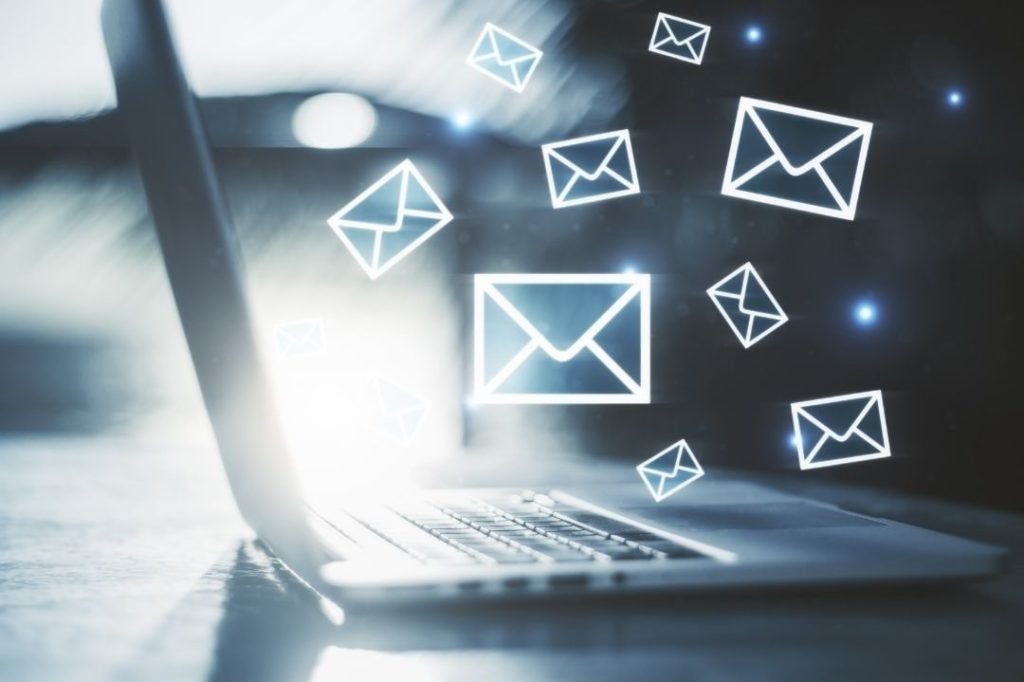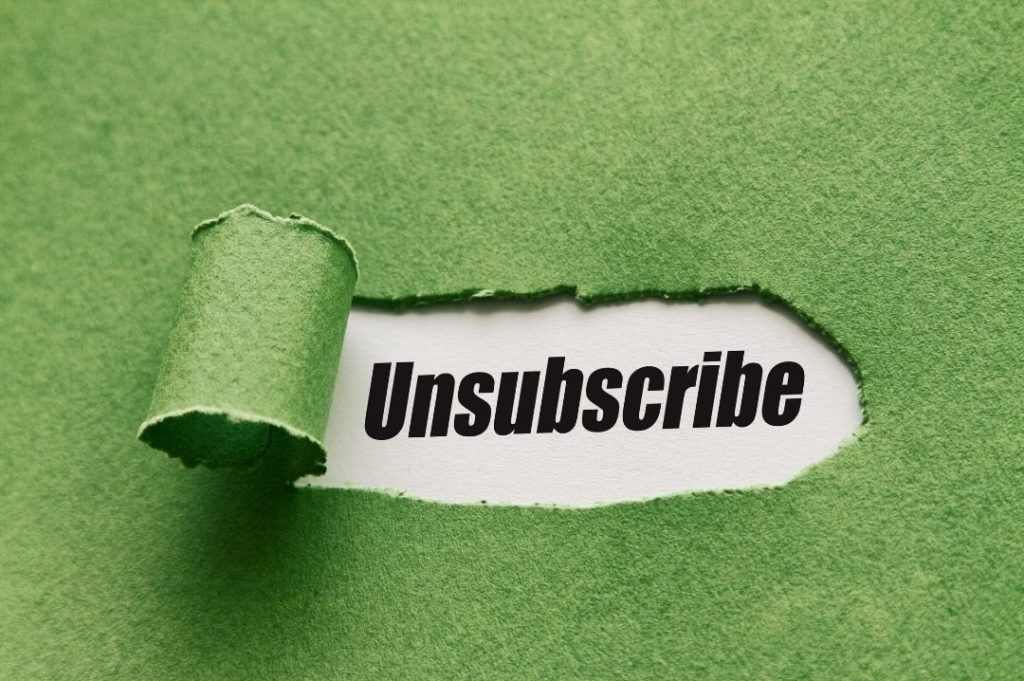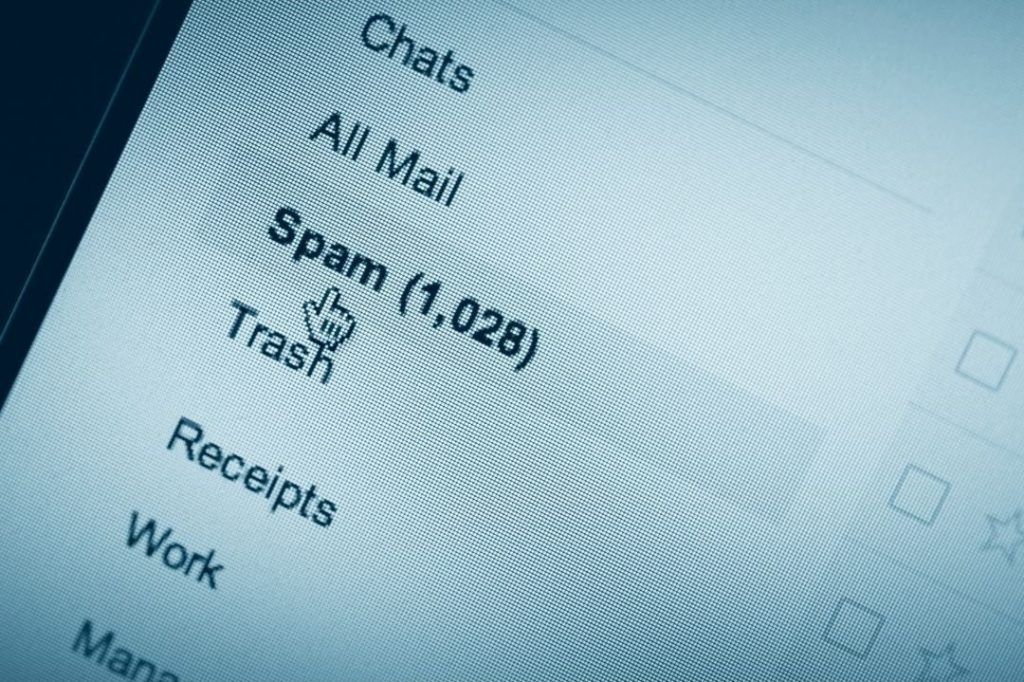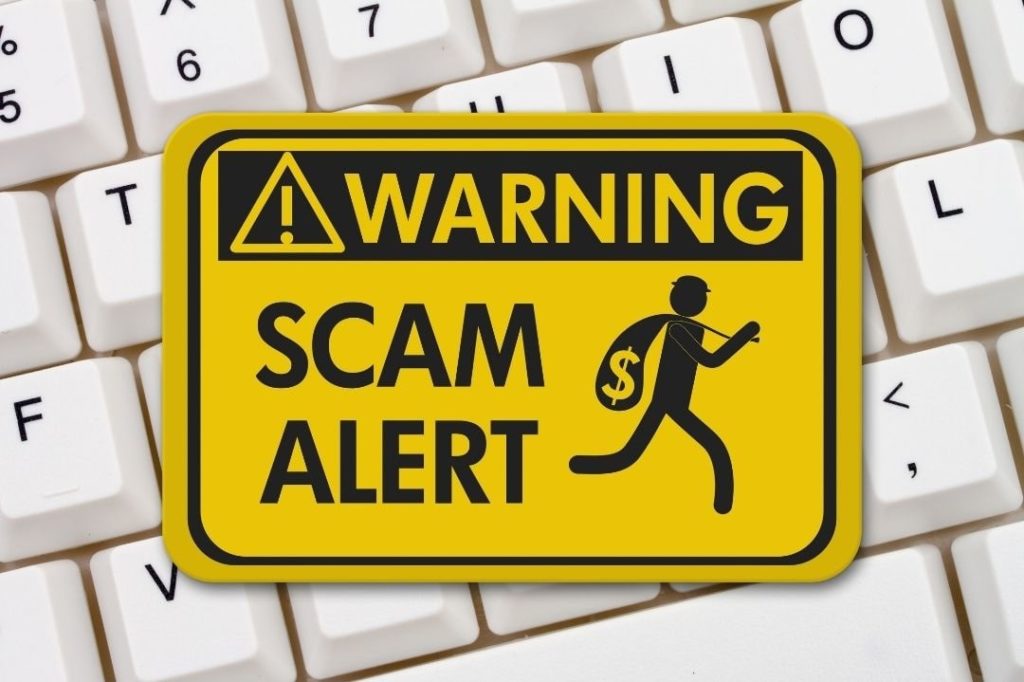In 1971, an era-defining event took place. Raymond Tomlinson sent the world’s first email message – to himself, as a test. Since then, emails have grown in popularity, and today it’s hard to imagine a world without this form of online communication.
We’ve been using email every day for many years, and there’s no indication that this is about to change – just look at the number of messages we receive or send every day while working in the business world.
Not to be vain in words: globally, an average of 319.6 billion emails are sent every day. There are about 7.75 billion people in the world (2020 figures) so it’s not hard to calculate that there are roughly 41 emails per day for each of us. How many of those emails do you think are spam? The record number of such messages – as many as 282.93 billion – was recorded in July 2021 (source: Statista).
It’s quite natural for companies to use email as a great tool for marketing activities. Today, we’re going to explore the topic of email marketing and talk about how to effectively communicate with potential customers and reach current recipients of our content via email, as well as what to do to avoid falling into the “spam” folder.
The name actually explains everything, but for the sake of accuracy, it is worth saying that today email marketing is understood as sending promotional materials of products and services to people interested in them. That is, for example, subscribers of our mailings or users who have consciously agreed to receive communication by email.
In email marketing, it’s important to meet the needs of the recipients, as opposed to what used to be the case, i.e. mass mailings conducted in the hope that someone will read our messages and become interested.
Marketing automation tools often help in running email marketing campaigns.
What are the aims of email marketing?
The first purpose that comes to mind is, of course, promoting your services or products. However, email marketing is also meant to provide information to your target audience and build awareness, trust, and loyalty to your brand.
Emails can be informational, such as messages about upcoming events that the recipient has signed up for. They can also have an educational function, such as a series of tutorials on car care during winter. Email marketing can also be aimed at Lead Nurturing, i.e. warming up sales leads – when a potential customer is at the stage of considering a purchase, it’s worthwhile to further “warm them up” and use an effective mailing.
You can read more about the stages a customer goes through on our blog: check out the article about Customer Journey.
The benefits of email marketing: why does it work?
Today, more than 4 billion people use email and 95% of users check their email daily (source: 99firms.com). This means that your potential audience includes more than half of humanity, which is quite impressive. Now we will present some advantages of email marketing.
Personalization
From the young to the very old, people today use emails for business purposes, to communicate with loved ones, to share information at school or college. This means that you can choose your target audience and reach them with your message. Personalize your messages to entice a potential customer to your offer – with a personalized approach, you show that you treat your customers subjectively.

Customer segmentation
By dividing your audience and customer list into segments, you can target your message to a very narrow group, thus increasing the chance of conversion. But it’s not just about segmenting by interests, age, gender, or other demographics. Notice that by having data from previous mailing campaigns, you can select people who are more likely than others to open emails or more likely to click on links you place in the content.
Low cost
Yes, you are investing time in creating the content and in the tool to run the email marketing campaign, but the cost of sending the emails is relatively low. In terms of price, it doesn’t make sense to compare emailing to TV or radio advertising. If you want results at a low cost, you should consider email marketing
Fast and efficient
If you think about the amount of time it can take to create an ad campaign for television, your hair stands on end. Several teams work on a design, which has to be approved by the client, there are often huge budgets at stake… In the case of an email or a newsletter, all you have to do is write good content and possibly create graphics, although not everyone does that. With a little practice, you can do it yourself using free tools. What’s more, sending messages is a matter of seconds.

Measure the results of your mailing campaigns and draw conclusions
It’s very easy to measure the results of your newsletter or mailing. While running campaigns, you have an insight into a number of statistics and indicators, about which we write more a few paragraphs later. What kind of information are we talking about? How many people
read your message; immediately deleted it; joined your mailing list or unsubscribed; clicked on the link, etc. This is very valuable information – learn from it and increase the effectiveness of your email marketing efforts in future campaigns!
On any subject
There is probably no other form of communication as versatile as email! In this way, you can inform your base of recipients about the latest events, promotions, or sales and send various types of offers. In the case of a newsletter, you can share your knowledge and encourage people to visit your blog. This is what many experts do – they arouse curiosity in the content of the email and then give the recipient even more, but on their own website or YouTube profile, where they regularly post interesting content for their target group.
No accidental recipients
Mailing lists that you create yourself consist of people who have consciously agreed to receive your marketing materials. Therefore, they are not random addresses found on the internet. Some companies, however, choose to purchase a database of contacts. This type of email marketing can fall short of expectations, though!

Build your audience base
If you want to run effective campaigns, you have no choice: you face the need to build your own audience base. We don’t recommend buying mailing lists for your email marketing efforts.
Why shouldn’t you buy a mailing list?
Purchased mailing lists are not compliant with GDPR – the people to whom you want to send messages must give their consent. Besides, the recipient on a bought list doesn’t even know that someone has purchased their data and if they receive an email from you, they will wonder where you got their address from, and that doesn’t bode well for the relationship as your email will probably end up in spam. Besides, you might have to pay a fine.
What’s more, if someone does open your email, there’s little chance they’ll choose to interact with it – click a link or an encouraging call to action button. There is a lot of talk about not opening suspicious emails, and certainly not clicking links or buttons. One careless click can cause serious damage – from losing valuable data to losing money.
All right, but how to create your own base of recipients?
First of all, take care of your website – it will be the main source from which you will gain valuable contacts. You should realize that if someone visits it, they are already interested in your offer to some extent. How do you get them even more interested so that they fill out a form and become your subscriber?
Create, and regularly send out, a newsletter with interesting content and make sure that your website includes download-worthy materials in exchange for personal information. These could be recordings of webinars, case studies, product demos, or free consultations with your experts. The last one works especially well in B2B. If you’re organizing events, promote them on your social media page to get users to sign up for them.
I already have a list: what’s next?
Once you have a list, you should send your audience a welcome mailing. You’ll certainly agree that it’s a good idea to start the relationship by introducing yourself and specifying what your subscribers will be receiving. Besides the obvious – thanking the recipient for subscribing – it’s worth remembering a few rules:
- ask for subscription confirmation (use a double opt-in model, i.e. first the form, then confirmation by clicking on the link in the email);
- send a discount code, or offer free delivery;
- encourage people to follow your company on social media;
- don’t forget to include interesting, distinctive graphics;
- send a welcome email as soon as the prospect fills out the form.
Building your own mailing list – summary
A self-built list will be shorter, but the statistics will improve – fewer emails will end up in the spam folder or “bounced” from addresses that don’t exist, so the bounce rate will decrease, and your email marketing will be more effective.
It’s worth remembering that in a B2B business, your list will consist of fewer addresses than it would in a B2C business. It’s understandable – when you’re retailing, you want to reach as many people as possible and increase the chances of them buying your products. In B2B, the decision-making processes are generally more intricate – an email sent to one person will be forwarded on to members of the organization, who can make a decision to purchase your product or service.

Important indicators in email marketing
When you’re running a campaign, you want your recipient to open the email, click the relevant link or banner, stay on your mailing list as long as possible, and of course – become a loyal customer. We will now tell you about a few indicators that are worth keeping in mind. They determine the effectiveness of the campaign – the insight into these indicators will allow you to make the necessary changes in your strategy.
Open rate (OR)
If you’re running a mailing campaign, the recipient must first and foremost open your message. The percentage of recipients who do this will be indicated by the Open Rate, which is the rate of message impressions. So make sure your email has an intriguing title – it determines whether someone will want to read on. Recipients have a few seconds to decide whether they want to read the message. Equally important is the preheader, which is the text that will be displayed in the email program right after the title. Grab your reader’s attention right from the start to increase your Open Rate!
CTR
It is the click-through rate for a link, banner, or button. CTR is calculated by dividing the number of clicks by the number of displays. In the case of mailings, we divide the number of clicks on the link in the message by the number of all the emails from the given campaign. As a rule of thumb, the higher the CTR, the better – because it means that your content is well suited to your target group, and this will probably translate into higher conversions.
Conversion rate
The conversion rate allows you to know how many people have taken the expected steps. For example, how many users clicked a link in your email, downloaded a PDF, signed up for a webinar, subscribed to your newsletter, or completed a survey.
Deliverability factor
This indicator is calculated by dividing the number of all delivered messages by the number of sent emails in a given campaign. The delivery rate is affected by whether recipients mark your emails as spam, in which case you lose your reputation as a sender. If you use a double opt-in model, deliverability will increase.
Unsubscribe Rate
Email Unsubscribe Rate tells you how many people have unsubscribed from your mailing list. It’s worth keeping an eye on this statistic – a high unsubscribe rate can mean not only that the content isn’t interesting, but also that something is wrong with the format of your emails or the display of images, for example. Or maybe your message goes to spam, or the recipient doesn’t remember that he or she subscribed to your newsletter?

Bounce rate
In the case of email marketing, this rate measures the percentage of your messages that are rejected by the recipient’s email server. How do you reduce the chance that an email will “bounce” and not get where you wanted it to go?
Make sure recipients want to receive your emails, keep your address database up to date, don’t send spam, don’t exceed the message size allowed on a given server, and verify your domain name. For example, in Gmail, Google’s email service, the size of an email must not exceed 25 MB.
How not to find yourself in the SPAM folder?
If you’re investing in email marketing, the last thing you’d want is your mailing going to spam. However, there are ways to avoid this! For the sake of accuracy, let’s establish what exactly we mean by this term. This is because each of us has some definition of this word in our heads.

What is SPAM?
These are unwanted or unnecessary messages, often sent in bulk to random recipients on the Internet. The content of the message does not add anything to the recipient’s life – there is no personalization. This type of message is sent against the addressee’s will (i.e. it is not a newsletter to which he/she subscribed or an order confirmation in an e-commerce store).
As a rule, these are unwanted advertisements for supplements of all kinds, electronic equipment, antivirus software, loans, and insurance, or portals with “adult themes” in a broad sense. There are also others, such as information about winning a lottery.
Protection against spam in e-mail marketing
What’s interesting, typically the addresses from which such e-mails are sent don’t resemble the sender’s name but are a string of meaningless characters. This is to make it harder to detect a spammer. You can look in your email inbox, and you’re likely to find unwanted ads sent from strange addresses.
It is difficult to avoid spam – even if you are very careful and do not leave your data in suspicious places. There are companies that trade in personal data. This is why there are EU regulations to limit this.
Webmail services have very good spam filters. If you choose a reliable mail service provider, you can rest assured that unwanted advertising will be largely stopped by the anti-spam screen.
Scam, phishing, and more
Wherever online marketing is concerned, scammers of all kinds find their niche. It’s no different with email marketing, so you need to know what to watch out for.
Scam
Remember the “Nigerian Prince” scam? The scammer offered the recipient of the email to split a huge amount of money, but the condition was that the recipient first made a wire transfer to his account. Once the transfer was received, the scammer would disappear.
Phishing
This is an attempt to phish for sensitive data, such as logins and passwords to online banking or social media. These types of emails are deceptively similar to emails from trusted institutions and redirect you to equally professional, fake login pages. It is also worth mentioning spear phishing, which targets a specific person or company and the whole plot is “tailor-made”.
Among email scams, we also distinguish:
- spoofing, which is impersonating a person or institution, but the difference with phishing is that in spoofing the criminal steals the data himself;
- pharming – which involves installing malicious software on an unaware victim’s computer and redirecting them from the real bank or other institution’s website to a fake one and stealing their data.

What to keep in mind in email marketing?
To recap, there are a few things you should keep in mind when engaging in email-based marketing efforts. Here are some practical tips that you can follow when planning your campaigns:
- determine the goal of your campaign and choose the right target audience that will be interested in the topic;
- test your messages (AB tests are a good idea);
- take care of legal and GDPR compliance;
- don’t buy a mailing list, but spend time building your own;
- make it easy for recipients to unsubscribe from your newsletter;
- send emails at a specific time, e.g. on Wednesdays at noon (readers will start to expect this, they will get used to the fact that they always receive your messages then);
- use double opt-in (after filling out the form, the user receives a message asking them to click on the activation link);
- make sure your messages are displayed well on mobile devices – 45% of users prefer using smartphones for emailing (source: Consumer Email Tracker);
- encourage action – remember the CTA button;
- personalize! Address the reader by name and provide offers tailored to their needs;
- titles must be eye-catching: recipients are more likely to open messages that include their name in the title. Moreover, titles between 6 and 10 words have the highest Open Rate (source: invespcro.com);
- it’s a good idea to add some graphics to your email, and you need to ensure that your message is in the right format – the body of the email can’t “stagger”. Also, make sure that all links work;
- in e-mail marketing, it is crucial to avoid mistakes, such as typos, which will make your message look unprofessional.
Explore marketing automation from Salesforce
Would you like to create great emails and reach your audience with personalized messages? Meet Email Studio from Salesforce! It’s part of Salesforce Marketing Cloud – a modular marketing automation solution, which means you can choose the right extensions (tools like Email Studio, Interaction Studio, Journey Builder, and more) based on your needs.
Explore Salesforce solutions and make your marketing efforts soar.
Contact us for a free demo!







































